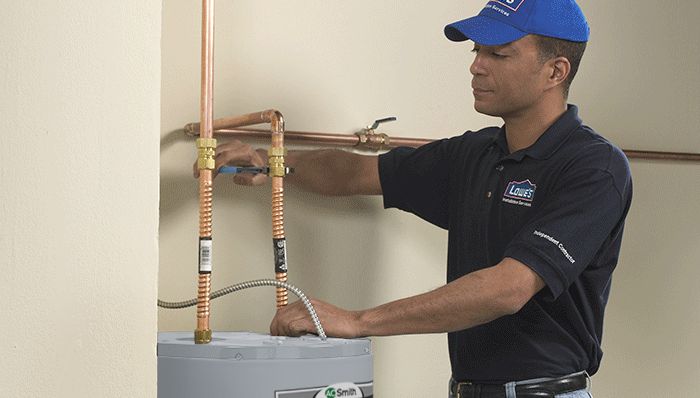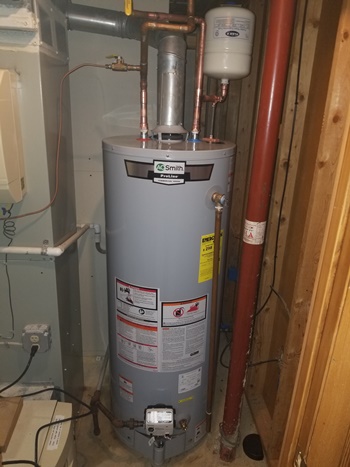Best Practices for Caring for Your Home's Hot Water System
Best Practices for Caring for Your Home's Hot Water System
Blog Article
This article down below involving Water Heater Maintenance Tips You Can't Afford to Forget is indeed informative. Don't bypass it.

Warm water is important for daily convenience, whether it's for a rejuvenating shower or washing dishes. To ensure your warm water system runs efficiently and lasts longer, routine upkeep is crucial. This short article provides useful tips and understandings on how to keep your home's hot water system to stay clear of interruptions and pricey repair work.
Intro
Maintaining your home's warm water system might appear difficult, yet with a few basic actions, you can guarantee it operates smoothly for years to find. This guide covers everything from comprehending your hot water system to DIY upkeep ideas and knowing when to employ expert aid.
Importance of Preserving Your Hot Water System
Normal maintenance not just prolongs the lifespan of your hot water system yet also guarantees it operates effectively. Neglecting maintenance can lead to reduced performance, greater power expenses, and even early failure of the system.
Indications Your Warm Water System Needs Upkeep
Knowing when your warm water system needs interest can prevent major concerns. Look out for signs such as irregular water temperature, unusual sounds from the heating system, or rusty water.
Comprehending Your Warm Water System
Prior to diving into maintenance tasks, it's handy to understand the fundamental parts of your warm water system. Typically, this includes the hot water heater itself, pipelines, anode poles, and temperature level controls.
Month-to-month Upkeep Tasks
Regular monthly checks can aid capture small issues before they escalate.
Flushing the Water Heater
Flushing your hot water heater gets rid of debris buildup, improving efficiency and prolonging its life.
Checking and Changing Anode Rods
Anode poles stop deterioration inside the container. Evaluating and changing them when broken is critical.
Evaluating and Adjusting Temperature Settings
Readjusting the temperature level setups makes sure optimum efficiency and safety and security.
Do It Yourself Tips for Upkeep
You can execute numerous upkeep tasks on your own to maintain your warm water system in top condition.
Looking for Leakages
Regularly inspect pipes and connections for leaks, as these can cause water damage and higher expenses.
Checking Stress Alleviation Valves
Checking the pressure safety valve guarantees it works correctly and avoids excessive stress accumulation.
Protecting Pipelines
Protecting hot water pipelines minimizes warm loss and can save power.
When to Call a Specialist
While do it yourself maintenance is advantageous, some issues call for expert competence.
Complex Issues Requiring Specialist Assistance
Examples consist of major leakages, electrical issues, or if your water heater is continually underperforming.
Routine Professional Upkeep Advantages
Professional upkeep can include thorough examinations, tune-ups, and guaranteeing conformity with security criteria.
Final thought
Regular upkeep of your home's warm water system is vital for effectiveness, durability, and expense savings. By complying with these ideas and knowing when to look for professional assistance, you can ensure a reliable supply of warm water without unforeseen disturbances.
Water Heater Maintenance: The Basics
Maintaining your water heater will ensure it operates efficiently and has a longer lifespan. Neglecting regular maintenance can lead to costly repairs and an even bigger chunk of your savings if you have to replace it sooner than necessary. But there’s good news: Most water heater maintenance tasks are relatively simple and easy for homeowners with basic DIY skills.
Flush the Water Heater
Over time, sediment and minerals can build up in the tank, reducing its efficiency and potentially causing damage. To flush the tank, turn off the power or gas supply, attach a hose to the drain valve near the bottom and open the valve to drain the water until it runs clear. Ideally, flush the tank annually.
Replace the Anode Rod
The anode rod is a sacrificial metal rod that helps prevent corrosion inside the tank. Inspect and replace it every three to five years or per the manufacturer's recommendation. To replace the anode rod, turn off the power or gas supply, drain a few gallons of water from the tank, unscrew the old rod and replace it with a new one. If the anode rod is significantly corroded or covered in calcium buildup, it's a sign the water heater may need to be replaced soon.
Tune-Up
A yearly tune-up can help identify potential issues and ensure your water heater operates at peak efficiency. This typically involves checking the thermostat, burner assembly (for gas heaters) and any other components specified by the manufacturer. During a tune-up, the technician may also clean the burner and adjust the pilot light (for gas heaters) or examine the heating elements (for electric heaters).
How to Maintain Your Water Heater
Insulate the tank. Insulating the tank can improve energy efficiency and reduce heat loss, saving you money on energy bills. You can purchase precut insulation blankets designed specifically for water heaters or use standard fiberglass insulation wrapped securely around the tank. Check the temperature. The recommended water temperature for most households is around 120 degrees Fahrenheit (49 degrees Celsius). Higher temperatures can increase energy costs and potentially cause scalding. Use a kitchen thermometer to check the temperature at the faucet nearest the water heater. Monitor water pressure. Excessive water pressure can strain the water heater and cause leaks or even tank failure. Install a pressure-reducing valve if necessary. The ideal water pressure range is between 60 and 70 PSI (pounds per square inch). Test the temperature and pressure (T&P) relief valve. The T&P relief valve is a safety feature that releases pressure if the tank gets too hot or the pressure builds up too high. Test it annually by lifting the lever and allowing a small amount of water to release. Replace the valve if it doesn't release water or reseal properly. Check for leaks. Regularly inspect the tank, pipes and fittings for leaks or corrosion. Deal with issues promptly to prevent further damage. Even a small leak can lead to significant water damage over time. Consider a tankless water heater. If your traditional tank-style water heater is nearing the end of its lifespan ( typically 10 years), consider replacing it with a tankless water heater. These units heat water on demand, reducing standby energy losses and potentially saving you money on your energy bills. Schedule professional maintenance. While homeowners can perform many water heater maintenance tasks, it's still a good idea to schedule professional maintenance every few years. A plumber or HVAC technician can thoroughly inspect the unit, identify potential issues and ensure it operates safely and efficiently. https://www.homeserve.com/en-us/blog/home-improvement/hot-water-heater-maintanence/

I stumbled upon that article on Tips For Maintaining Your Hot Water Heater while looking around the internet. Remember to set aside a second to distribute this post if you enjoyed it. We truly appreciate your readership.
Request Service Report this page